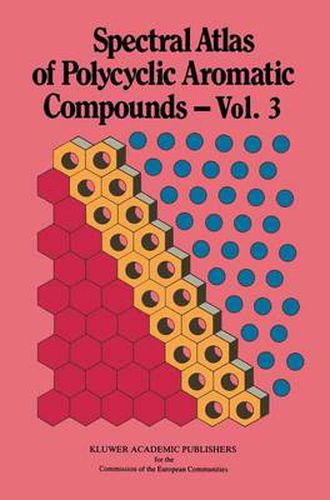Readings Newsletter
Become a Readings Member to make your shopping experience even easier.
Sign in or sign up for free!
You’re not far away from qualifying for FREE standard shipping within Australia
You’ve qualified for FREE standard shipping within Australia
The cart is loading…






This title is printed to order. This book may have been self-published. If so, we cannot guarantee the quality of the content. In the main most books will have gone through the editing process however some may not. We therefore suggest that you be aware of this before ordering this book. If in doubt check either the author or publisher’s details as we are unable to accept any returns unless they are faulty. Please contact us if you have any questions.
This volume is the 3rd in a series of comprehensive publications devoted to the molecular spectra and environmentally important properties of polycyclic aromatic compounds which constitute one of the most interesting classes of environmental carcinogens. Since the first identification of dibenz(a,h)anthracene and later benzo(a)pyrene as chemical carcinogens in the 1930’s, the number of publications devoted to this ubiquitously occurring group of compounds has increased constantly. Therefore, this reference source for the spectral, physicochemical and en vironmentaJ properties of polycyclic aromatic compounds should be a welcome addition to the previous volumes for scientists engaged in the investigation, characterisation and control of this hazardous class of pollutants. As was the case with the preceding volume, this publication is the fruit of a close collaboration within the General Directorate for SCience, Research and Development of the Commission of the European Communities between the Environment Institute of the Joint Research Centre Ispra, the Community Bureau of Reference and expert laboratories in the member states. F. Geiss Director of the Environment Institute JRC Ispra 1. Introduction Polycyclic Aromatic Compounds (PAC) are an important class of carcinogenic environmental pollutants, which occur in air, water, soils, sediments, in food and in the work area. Because many hundreds of closely related isomers are being formed and released in the environment from combustion processes of fossil fuels and other organic materials, their environmental and health con trol presents a difficult task.
$9.00 standard shipping within Australia
FREE standard shipping within Australia for orders over $100.00
Express & International shipping calculated at checkout
This title is printed to order. This book may have been self-published. If so, we cannot guarantee the quality of the content. In the main most books will have gone through the editing process however some may not. We therefore suggest that you be aware of this before ordering this book. If in doubt check either the author or publisher’s details as we are unable to accept any returns unless they are faulty. Please contact us if you have any questions.
This volume is the 3rd in a series of comprehensive publications devoted to the molecular spectra and environmentally important properties of polycyclic aromatic compounds which constitute one of the most interesting classes of environmental carcinogens. Since the first identification of dibenz(a,h)anthracene and later benzo(a)pyrene as chemical carcinogens in the 1930’s, the number of publications devoted to this ubiquitously occurring group of compounds has increased constantly. Therefore, this reference source for the spectral, physicochemical and en vironmentaJ properties of polycyclic aromatic compounds should be a welcome addition to the previous volumes for scientists engaged in the investigation, characterisation and control of this hazardous class of pollutants. As was the case with the preceding volume, this publication is the fruit of a close collaboration within the General Directorate for SCience, Research and Development of the Commission of the European Communities between the Environment Institute of the Joint Research Centre Ispra, the Community Bureau of Reference and expert laboratories in the member states. F. Geiss Director of the Environment Institute JRC Ispra 1. Introduction Polycyclic Aromatic Compounds (PAC) are an important class of carcinogenic environmental pollutants, which occur in air, water, soils, sediments, in food and in the work area. Because many hundreds of closely related isomers are being formed and released in the environment from combustion processes of fossil fuels and other organic materials, their environmental and health con trol presents a difficult task.